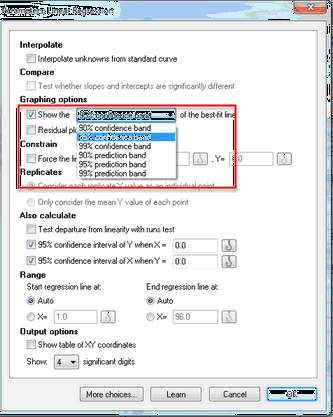
- PREDICTION INTERVAL MULTIPLE REGRESSION EXCEL SOFTWARE
- PREDICTION INTERVAL MULTIPLE REGRESSION EXCEL WINDOWS
To find a percentile (critical value) for a t-distribution, type =TINV(p,df), where p is the two-tail significance level (two-tail area) and df is the degrees of freedom. Repeat for other indicator variables (if necessary). To create indicator (dummy) variables from a qualitative variable, type, for example, =IF(X="level", 1, 0), where X is the qualitative variable and "level" is the name of one of the categories in X. To transform data or compute a new variable, type, for example, =LN(X) for the natural logarithm of X and =X^2 for X 2. For example, to find out about “scatterplots,” type scatter plot in the search box. You can access help by selecting Help > Microsoft Excel Help. Graphs can also easily be copied and pasted to other applications. Output can be copied and pasted from Excel to a word processor like OpenOffice Writer or Microsoft Word.  Excel does not appear to offer a way to edit the last dialog box. You can also use File > Import to open text data files. To open an Excel data file, select File > Open.
Excel does not appear to offer a way to edit the last dialog box. You can also use File > Import to open text data files. To open an Excel data file, select File > Open. 
If desired, change Excel’s default options by selecting Tools > Options.Getting started and summarizing univariate data
PREDICTION INTERVAL MULTIPLE REGRESSION EXCEL SOFTWARE
These instructions contains less material than the instructions for statistical software packages (available here) because it is not possible to easily carry out many of the regression techniques using Excel (without a statistics add-on module such as StatTools or Analytic Solver Data Mining).
PREDICTION INTERVAL MULTIPLE REGRESSION EXCEL WINDOWS
These instructions are based on Microsoft Office Excel 2003 for Windows (with the Analysis ToolPak activated), but they (or something similar) should also work for other versions. The numbered items cross-reference with the “computer help” references in the book. These instructions accompany Applied Regression Modeling by Iain Pardoe, 3rd edition, Wiley, 2020.






 0 kommentar(er)
0 kommentar(er)
